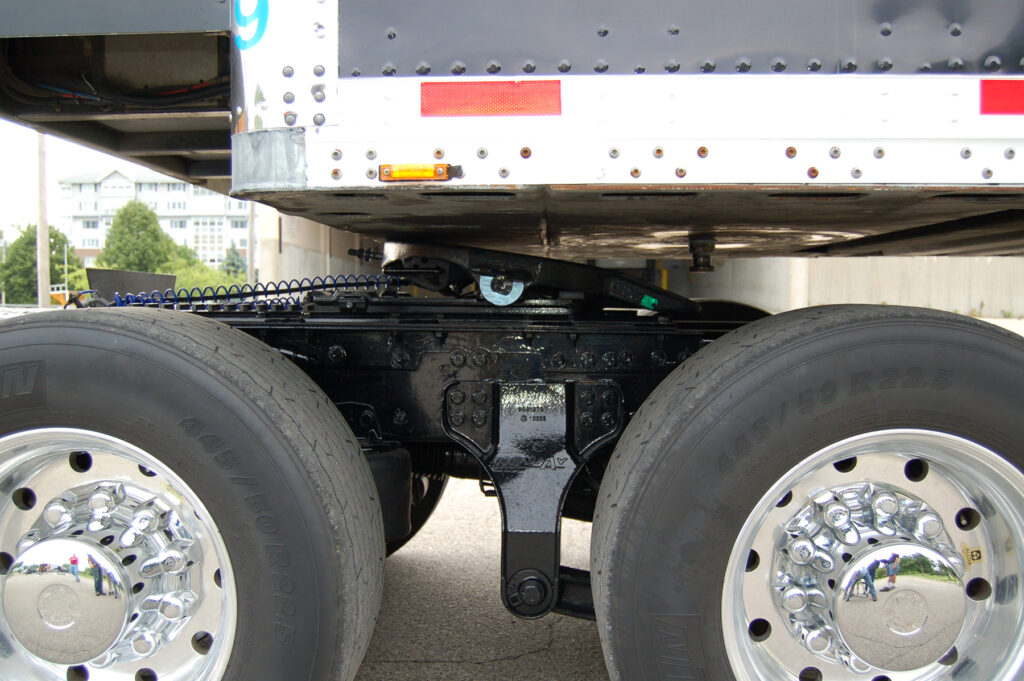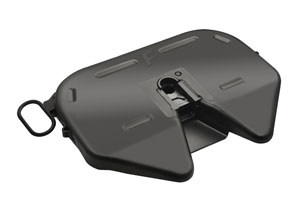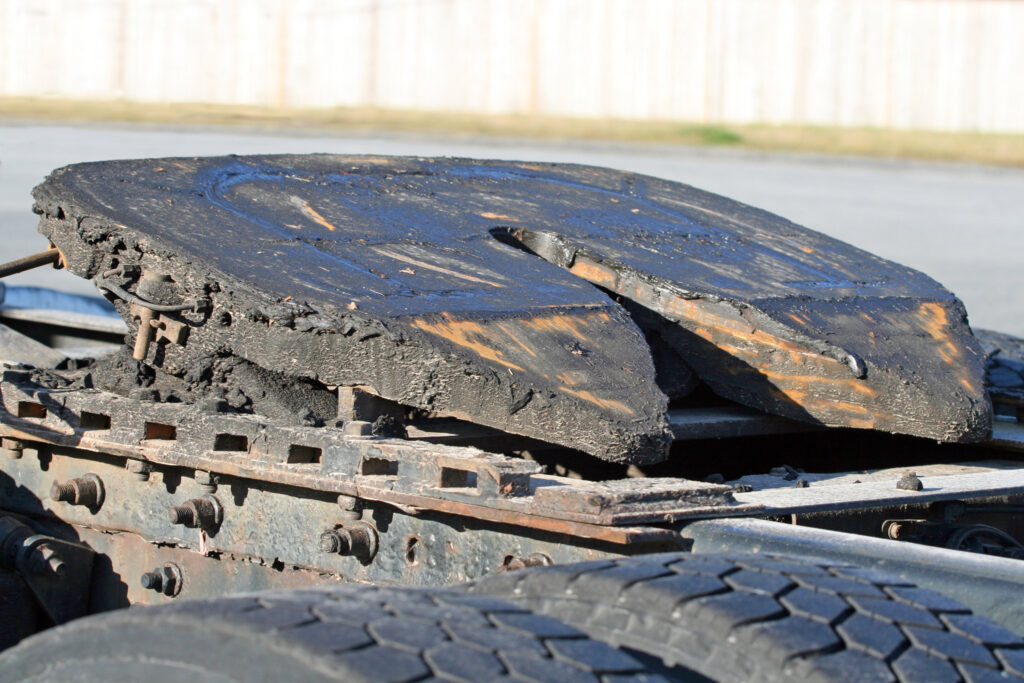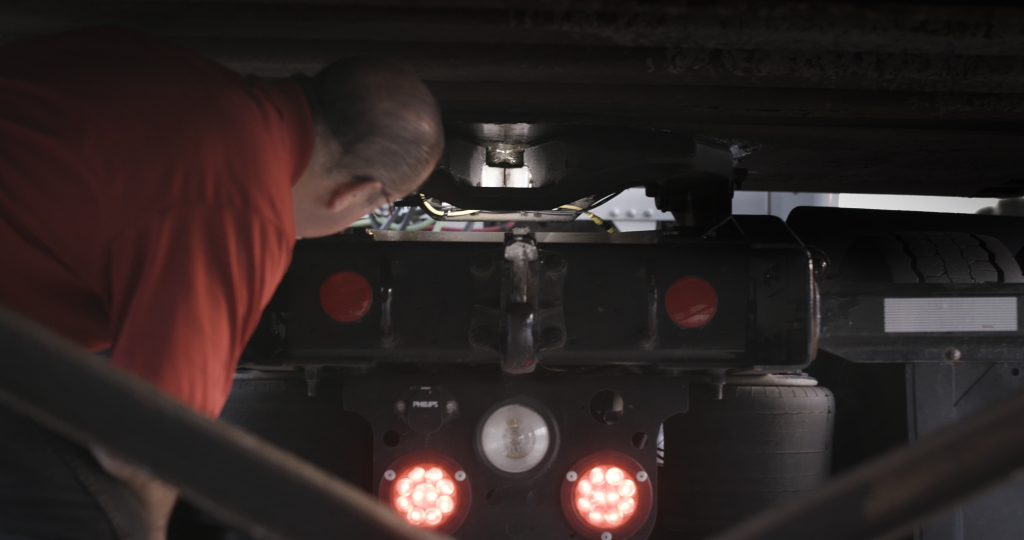Keep connected with the right fifth wheels and pintle hooks
Fifth wheels are responsible for plenty of heavy lifting and pulling in the daily business of trucking, but they’re often an afterthought in the spec’ing process. That big plate with the maw in the middle? As long as it fits under the trailer’s nose and the kingpin fits into the jaw, everything seems good to go.
It ain’t necessarily so.

It all begins with gross combination weights. A standard-duty fifth wheel will be fine up to 95,000 lb., but higher weights are commonplace in Canada, automatically leading to moderate or even severe duty cycles.
“You don’t see many standard-duty trucks on the road here,” says Travis Hunter, sales and service representative with SAF-Holland Canada.
The type of work also needs to be considered. “Is it city P&D? Is it highway? Is it on/off road? Is it all offroad?” he asks. For example, he finds fifth wheels put into city service are often under-spec’d. “Next to shunting it’s probably the most brutal environment for the fifth wheel because of the number of couples over the day.”
J. Aaron Puckett, vice-president – fleet sales at Fontaine Fifth Wheel, adds that a truck coupling or uncoupling every 50 km or so will benefit from an upgraded fifth wheel, even when hauling relatively light loads. The same can be said for equipment spending more than 10% of its time off paved roads.
Shedding weight
Weight-related discussions are not limited to vertical or drawbar loads, either.

Fleets were admittedly more concerned with fifth wheel weights seven or eight years ago, when looking to offset the sudden increase in weights associated with emission control systems, Puckett says. But there are still operations looking to shed unwanted pounds, particularly when hauling reefers or tankers.
“A lot of on-highway applications could typically go with a stationary fifth wheel, which is going to save weight,” Hunter says. But buyers often opt for sliding fifth wheels for another reason. “It’s a whole lot easier to sell a truck if it’s got a sliding fifth wheel on it.”
Just remember the structure that lies beneath is just as important as the plate itself.
“All that structure adds to the strength of the fifth wheel,” Puckett says, referring to the mounting rails made by OEMs, the hardware mounted to the frame, and more. “We want the product to hold up at least for the [truck’s] first life.”
Heights and tilts
The types of trailers to be hauled will play a role when it comes to identifying the proper frame heights. A van hauler may need 46 to 48 inches from the ground to the top of the fifth wheel. With a tanker, that distance is more likely 51 to 53 inches. Choose a height that’s too low, and a food grade tanker might not be able to properly unload.
Take an under-spec’d fifth wheel into rough terrain, meanwhile, and the button at the bottom of the kingpin can pull up on the fifth wheel’s jaws and warp the casting.
There’s an easy way to check for this issue, Hunter says. Place a straight edge across the fifth wheel during a preventive maintenance check. “If it has been center-loaded, there’s a good chance the bracing under the fifth wheel will be cracked.”
Any center-pulled fifth wheel is heading to the scrap heap.
Then there are a few other angles to consider.
Hunter is seeing more buyers opt for no-tilt fifth wheels in Ontario, where the models are being used for frameless end dumps and side dumps. Meanwhile, fully oscillating designs come into play when a trailer has a center of gravity lower than the fifth wheel itself, like a lowboy or belly dump trailer.

Lubrication needs
When it comes to ongoing maintenance for fifth wheels, regular cleaning and proper lubrication are the most important factors to consider — and the needs here will vary depending on the type of lock, time of year, and type of top plate.
“The ice and the salt and everything else, it’s brutal on the fifth wheel,” Puckett said, referring to the debris that gets in the locks.
While Puckett sees benefits in preventive maintenance conducted every 90 days, he knows that is unlikely. “It’s the nasty product that nobody wants to touch, so it does not get the attention that it should,” he says. But there are benefits when shops take a moment to close a lock, degrease it, and then properly grease the fifth wheel before returning things to service.
“You’ll see it caked on there,” Puckett says, referring to the grease hanging off the edges of a neglected fifth wheel. “That is really hardly doing you any good.” Just keep the grooves clear of debris and the lubricant will find its path.
The challenges will also increase as temperatures drop. During warmer weather, grease will drip down into the jaws of an A-style lock, where it will begin to solidify when cold weather comes. “It will restrict the movement of the jaw,” Hunter explains. That means cleaning the underside of the fifth wheel with a pressure washer – especially if the lock design doesn’t include a sliding yoke that naturally pushes grease out of the way. “Then lubricate it well with a light oil and something that’s not going to collect road debris and gravel,” he says.
It’s about more than caring for the fifth wheel alone. Poor lubrication can lead to the chatter that will prematurely wear out steer tires, Puckett says as an example.
Low-lube top plates can be an attractive option to those who rarely uncouple from light trailers. And since the lube plates are recessed into the top of the fifth wheel, there’s no danger of affecting the ride height.
Greaseless fifth wheels can be a great fit for a beverage hauler or a tanker fleet, but there are limits. “If coupling multiple times a day, those pads are not going to hold up,” Puckett says. “If I’m a regional haul LTL, or in a leasing fleet, no way.”
Hunter clearly isn’t a fan of aftermarket lube plates that seem to be a favored choice of gravel haulers. At a half-inch thick, such plates can limit the movement of the kingpin within the jaw, he says. Hop a curb, and that can be enough of a difference to bend the fifth wheel or upper coupler plate.
“They’re designed to bear the weight down, not up,” Hunter says of fifth wheels. “You can bend the bracing or crack the bracing underneath.”
It’s also a change that can void a fifth wheel warranty.
“You want to make sure you’re checking the adjustments,” Puckett adds, referring to ongoing maintenance. “You’re adjusting them for wear. A fifth wheel’s locking system is built like a brake pad. It’s going to wear over time. We want the lock to wear versus a kingpin.”

Air releases and warning lights
There are other options to consider, with some fifth wheel features supporting drivers as much as trailer weights. A perfect example of that comes in the form of air releases which will pull open a lock rather than leaving drivers to heave away at a release handle.
Electronics can even be used to add a sense of relief. SAF-Holland has an electronic lock indicator that will shine four LEDs on the jaw and remain lit for five minutes during a circle check. If the LEDs are flashing red, the trailer needs to be recoupled. This, Hunter says, can be particularly handy when coupling to the second trailer in a B-train or long combination vehicle (LCV). FedEx is already using them on dolly converters.
Pintle hooks
Discussions about long combination vehicles also extend to another coupler in the form of pintle hooks.
Most fleets involved in such work will actually err on the side of caution, Hunter says, noting that common choices are versions with a 20,000-lb. vertical load and 100,000-lb. drawbar. “There’s very few times you’re going to be hauling a 100,000-lb. trailer on an LCV. It’s apt to be two 40,000-lb. trailers,” he admits. But the higher ratings will mean longer life, and some added support during a jackknife.
It’s about more than the strength of the pintle hook alone. Hunter refers to the spec’s for bolt lengths and patterns as being particularly important here. “They should all have Grade 8 fasteners. They’ll all have torque values,” he says.
Puckett also points to one other point in the coupling equation.
Don’t forget how the kingpin itself is spec’d, he says. “A lot of them have cracks in them. They’re warped. That bolster plate is now center-loading the fifth wheel. You’re not getting good contact.
“Those are what keep me up at night.”
Have your say
This is a moderated forum. Comments will no longer be published unless they are accompanied by a first and last name and a verifiable email address. (Today's Trucking will not publish or share the email address.) Profane language and content deemed to be libelous, racist, or threatening in nature will not be published under any circumstances.